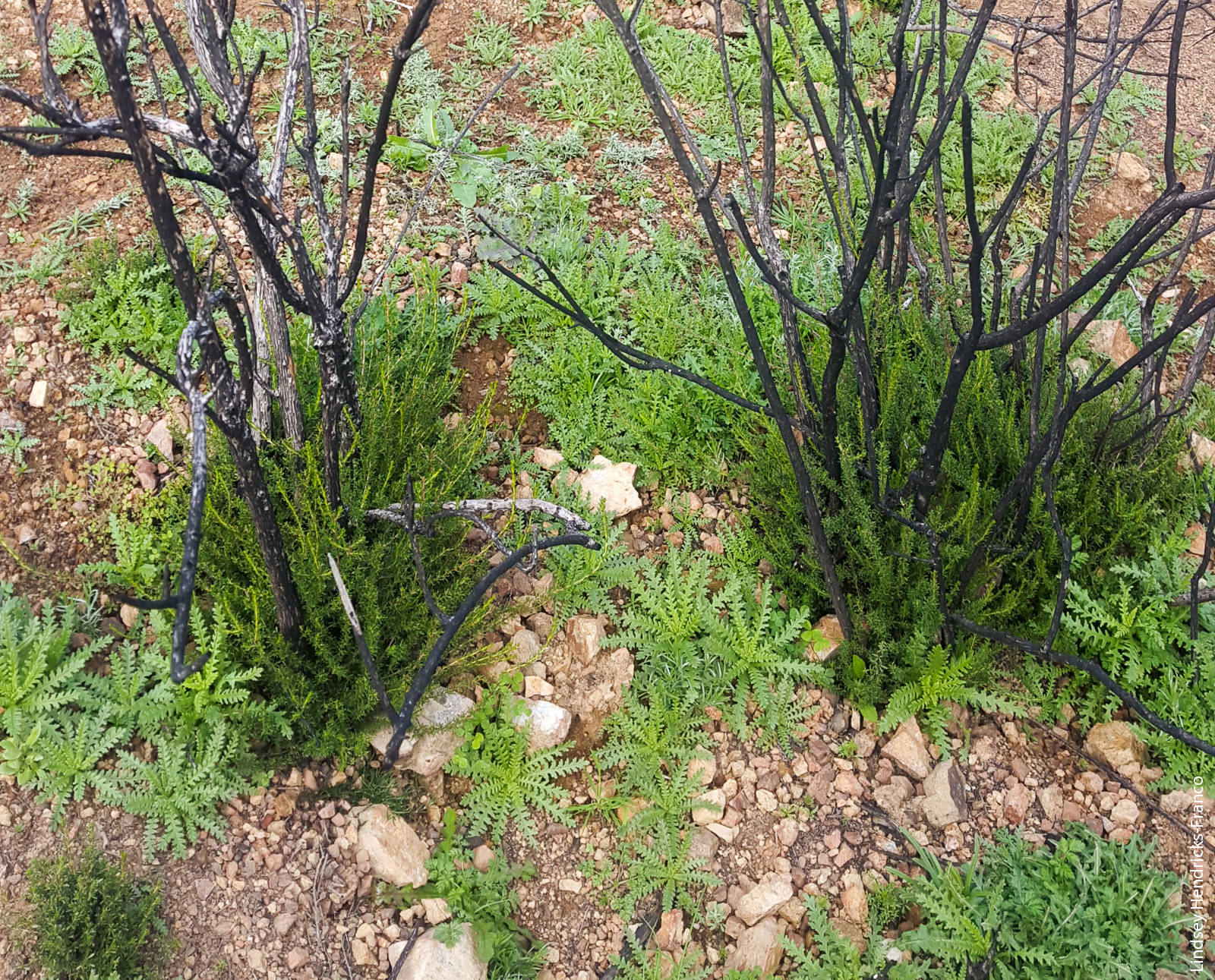All Issues
After fire, the roles of rabbits and wildflowers
Publication Information
California Agriculture 71(2):57-57. https://doi.org/10.3733/ca.2017a0014
Published online April 12, 2017
Summary
The dark ash left by a chaparral fire is rich in ammonium nitrogen; can the ecosystem absorb it before winter rains wash it away?
Full text
Immediately after a chaparral fire, the ground is covered with a few millimeters of very dark ash that is rich in ammonium nitrogen, a form highly available to plants. The boon it promises to this generally nitrogen-limited ecosystem, however, can be short-lived. To help restore chaparral shrubs and a full recovery of the chaparral ecosystem, plants must take up this nitrogen quickly. Otherwise, it converts to nitrate nitrogen and at the onset of winter rains runs off or leaches to creeks, where it becomes a pollutant.
At Hopland Research and Extension Center (HREC), researcher Lindsey Hendricks-Franco, a doctoral candidate in integrative biology at UC Berkeley, is investigating the postfire nitrogen cycling roles played by ephemeral herbaceous plants such as whisperingbells (Emmenanthe penduliflora) and Brewer's redmaids (Calandrinia breweri) and by herbivores — black-tailed deer, rodents and rabbits. She suspects they play a significant role in retaining nitrogen in chaparral ecosystems, the most extensive ecosystem type in California.
Reseacher Lindsey Hendricks-Franco hypothesizes that herbivores will accelerate nitrogen cycling in nitrogenrich chaparral systems.
“It's a race,” Hendricks-Franco says. “From dormant seed banks, you get blankets of big leafy herbaceous annuals that are really important ammonium nitrogen sponges. And if those plants don't appear and grow quickly, the ash, and the nonabsorbed nitrogen, washes away.”
Last year, Hendricks-Franco set fires at HREC in April and October, sampling for nitrogen before and after the fires. In mid-December, annuals were sprouting, and the chaparral shrubs burned in the spring fire showed some new growth. But so much rain had fallen, ash was also washing away.
In late December, fences were up around some of the burned plots, to study the effect of excluding herbivores. In January, Hendricks-Franco was weeding the plots so that they contained four different plant groups: (1) all naturally occurring herbaceous plants, (2) only plants that aren't nitrogen fixers, (3) only nitrogen-fixing plants and (4) no herbaceous plants at all.
She hypothesizes that the first group will cycle nitrogen most vigorously, followed by the second, third and fourth, in that order. Additionally, she thinks herbivores will accelerate nitrogen cycling in some plots, because in high-nitrogen systems, they stimulate growth of fast-growing plants that can tolerate grazing. Nitrogen sampling during the next two years will reveal how well different plant communities retain nitrogen after fire, with and without herbivores, and the effect of fire season.
This work requires a trial in a natural setting such as HREC, which has mature chaparral that is accessible and can be burned safely. Until now, there had been no formal replicated fire trials with control plots to measure the effects of animal grazing on nitrogen cycling after chaparral fire. The study results will help guide land managers on what to do in the first few months after a fire — perhaps seeding native plants and introducing grazers — to encourage fast recovery of the chaparral and associated species.







